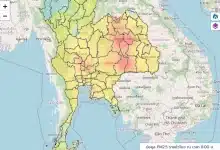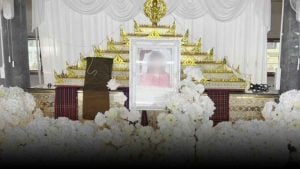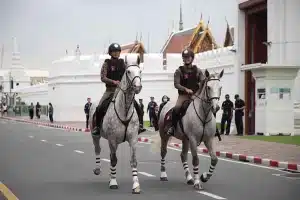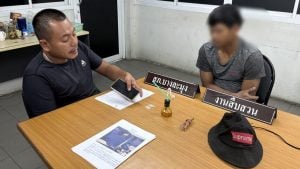History: Southern Thailand courts united Japan’s first Shogun
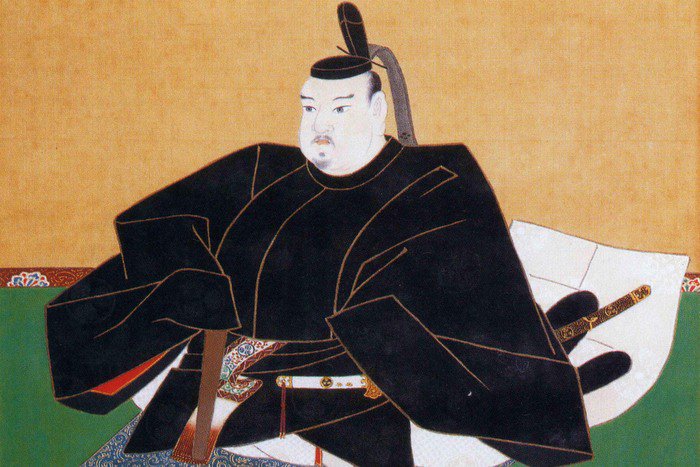
PHUKET: Tokugawa Ieyasu was the first Shogun of a united Japan. In the year 1600, after the bloody battle of Sekigahara, Ieyasu managed to unite the warring clans of Japan under his sovereignty, ushering in a long era of peace under the Tokugawa Shogunate.
A year earlier, in 1599, a visiting envoy from the Kingdom of Pattani presented Ieyasu with a letter from Queen Raja Ijau, who was the ruler of Pattani. Pattani during that time was a thriving independent kingdom, enjoying a period of peace and prosperity known as the golden era of the “Four Queens”.
The letter, however, stated that the ruler of Pattani was King Shitsuridanarigui. The Pattani sultanate had intentionally disguised the gender of their ruler in their dealings with the Japanese.
Tokugawa Ieyasu wrote an official reply to the Pattani “king” with his own court name of Minamoto Ieyasu. When the letter from Pattani arrived at the Japanese court, Ieyasu was acting as the head of a council that ruled after the death of Toyotomi Hideyoshi, a leader of one of the warring Japanese clans.
His letter to the Queen of Pattani explained the situation in Japan during that time, stating that the previous ruler of his clan, Hideyoshi had suddenly passed away in August.
He thanked the ruler of Pattani for the lavish gifts she had sent through her envoys, including the “gifts of your country’s birds and products”. Ieyasu also expressed that he wanted to strengthen trade ties with Pattani and that he believed the traffic of merchant vessels between Japan and the sultanate of Pattani will become more frequent.
Ieyasu concluded by wishing that the two countries, although distant, could develop a firm friendship.
In return for the gifts that were generously sent, Ieyasu gave the envoys two suits of Japanese armor that were to be given to the ruler of Pattani.
The second mission from Pattani arrived after Ieyasu has already consolidated his power over all of Japan. On September 15, 1600, Tokugawa Ieyasu decisively defeated his last opponent, Ishida Mitsunari, at the Battle of Sekigahara. Two years later, in 1602, a second mission from Pattani arrived. This time, Queen Raja Ijau addressed Ieyasu as King Lin In Lin of Pattani.
Ieyasu’s reply was to assure the ruler of Pattani that the clan wars that had plagued Japan for years were over, and the country was now maintained in a peaceful state. According to Ieyasu, from now on, many merchants would be sailing with precious merchandise to the shores of Japan and they should be able to do so without anxiety or worry, for supervision was strict along both land and sea routes.
On February 12, 1603, the Imperial Court accepted Tokugawa Ieyasu’s de facto rule over Japan. Ieyasu ascended to power as Shogun and established his seat of power at Edo, present day Tokyo.
By 1605, the new Shogun had issued trade licences to various merchants in Japan, allowing them to sail to foreign lands to trade. From July 1604 till January 1605, 11 trade licences were issued for voyages to Siam. Of these 11, four were for Siam, four were for the Sultanate of Pattani, two were for Songkhla and the remaining licences were for trade expeditions to Hoi-an.
In August 1606, another envoy from Pattani arrived at the Japanese court. By this time, Ieyasu had retired from the position as Shogun. The Imperial Court appointed his son, Tokugawa Hidetada as Shogun. Instead, Ieyasu took on the title of Ogosho, literally meaning “influential figure”.
Ieyasu still received the envoys from Pattani but this time, his reply letter to the ruler of Pattani was not as delightful as before. Ieyasu explained that in recent years, the traffic in trade between Pattani and Japan had increased, however, the crimes committed against Japanese merchant ships greatly worried the Ogosho.
Japanese traders had suffered from plunder, pillaging and riot in Pattani, according to Ieyasu.
Apparently Japanese merchants experienced treachery in Pattani, despite purchasing more goods than they were able to load.
Japanese traders were being subjected to acts of murder and arson and the incidents culminated in Japanese retaliations of their own. Angered over such barbaric treatment by the locals of Pattani, Japanese merchants rioted on several occasions. It is said that Japanese merchants twice set the city of Pattani ablaze.
Ieyasu’s letter in the year 1606 was unapologetic about such news. He also vowed to sentence those responsible to the severest possible penalties. After this incident, there was no further diplomatic exchange between Pattani and Japan. Pattani was excluded from all further commercial links with Japan.
Even though Japan fell out with the Sultanate of Pattani, the country continued its close trade ties with the Kingdom of Siam, which the Japanese called Shamuro.
In fact, after the fallout with Pattani, trade between Japan and Siam seemed to gain momentum as more trade licences were issued for Japanese merchants visiting Siam.
— Anand Singh
Latest Thailand News
Follow The Thaiger on Google News:
